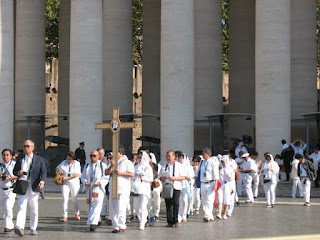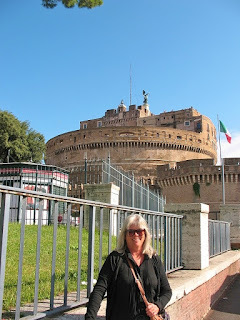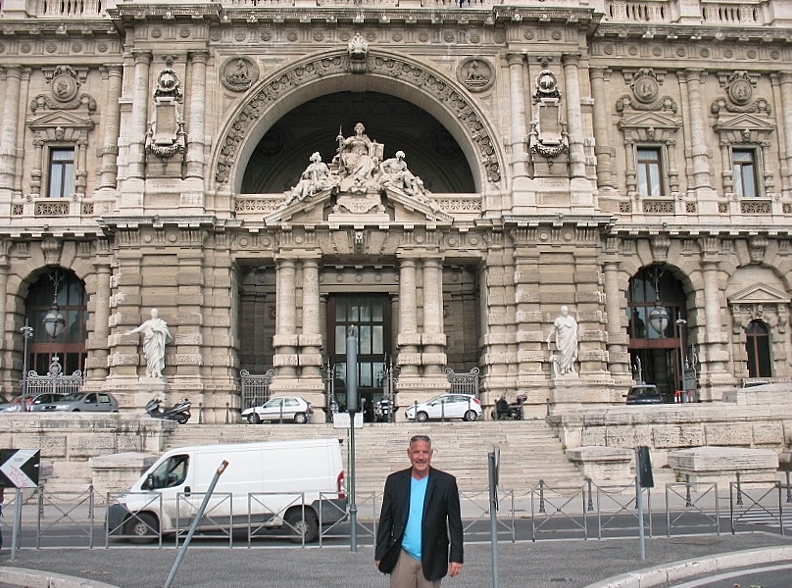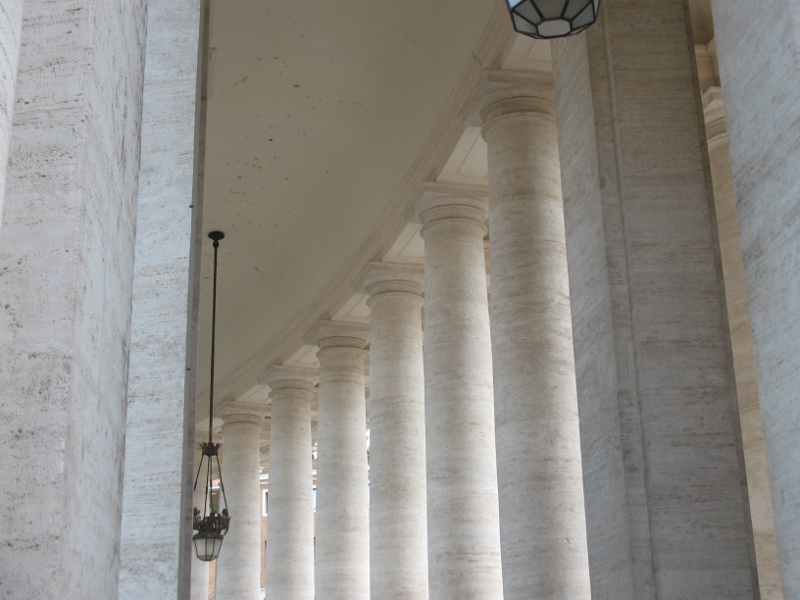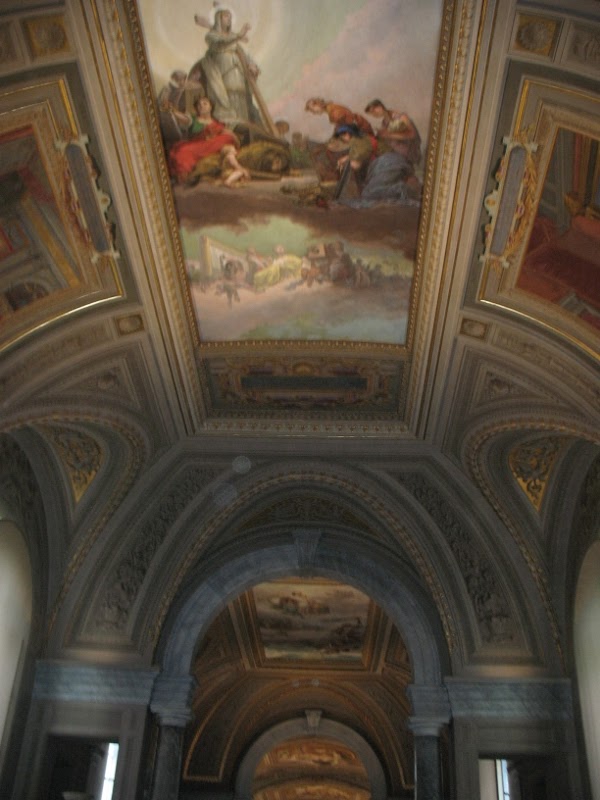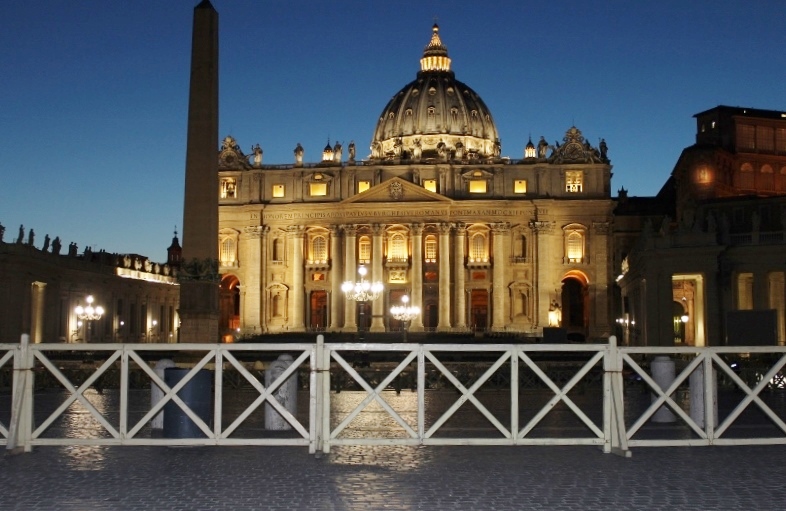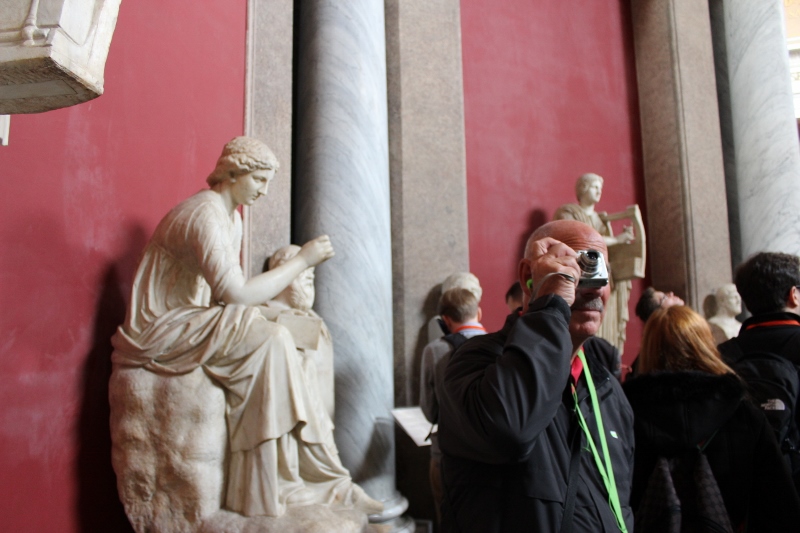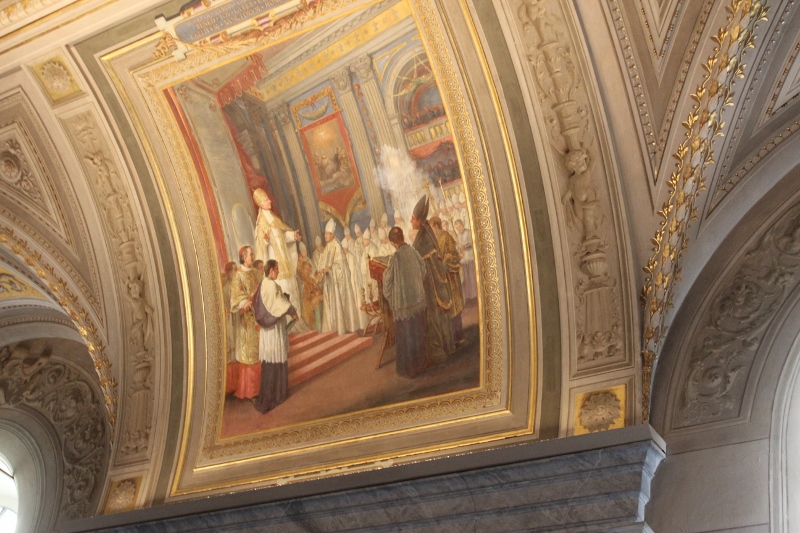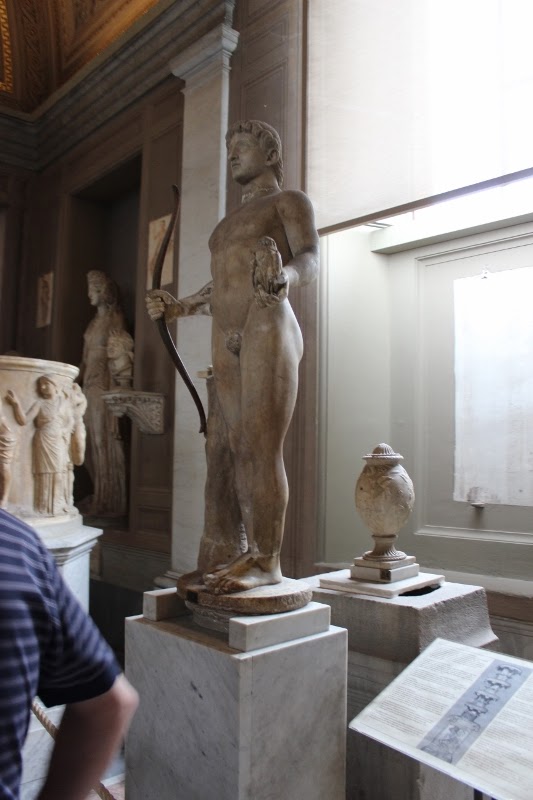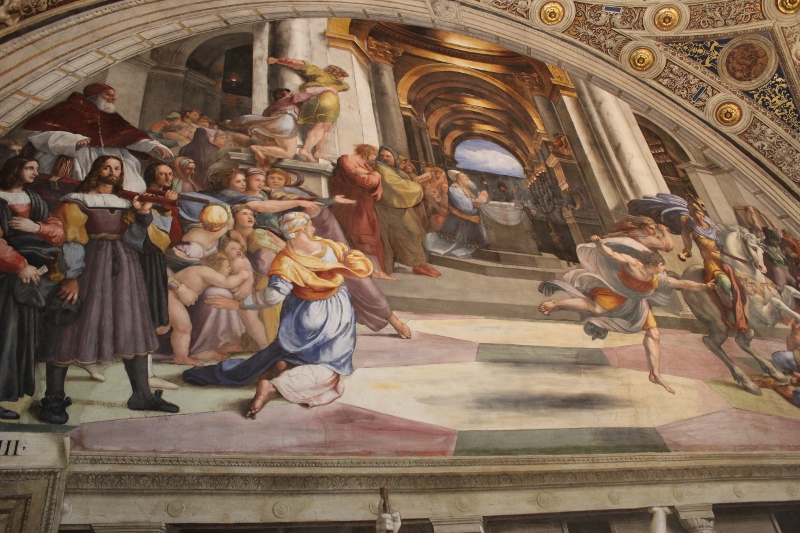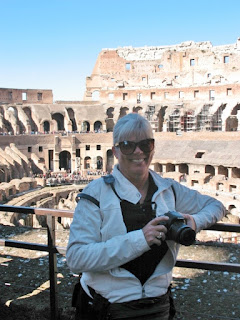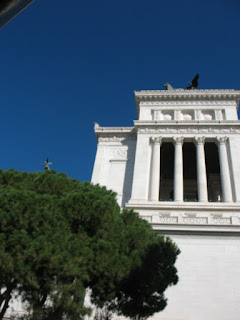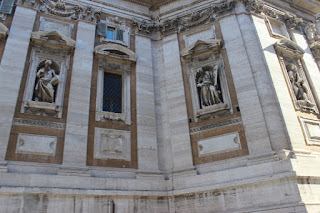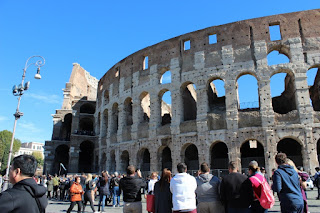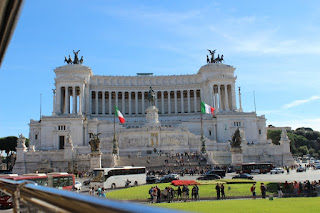 Let me quickly get the negative out of the way first, because there are far too many positives about Rome to share with you. Born and raised Catholic, I feel justified and quite comfortable in voicing critical comments about my own religious heritage and upbringing. This is MY religion and MY church - so if you don't like it...sorry, but I own it, and I'm entitled to voice my opinion. If I should offend any Catholics...I don't apologize – again, I'm catholic - my initial comments here are real-world and frankly, not very flattering or becoming of these 'holier than thou' folks who live behind the cloth in Rome...who frequent the Vatican daily and label themselves servants & missionaries of the Lord. This goes for the priests, the nuns, the Jesuits, the Franciscans, and everyone else who crossed my path and totally IGNORED the homeless, the hungry, the needy. What a bunch of heartless, plastic hypocrites. Yup...and they should be thankful I'm not being more graphic or descriptive. No doubt, there are many genuine, caring citizens in Vatican City, but we didn’t visibly meet any willing to help. And certainly the Pope himself, based on what I’ve observed of him the past few years, is truly an authentic, compassionate, & loving soul. Many others…leaching off donations made to the church by you and by me...many social misfits who couldn't find a path in life or a way to support themselves. So what do they do? They brandish the cloth - the 'holier than thou' wardrobe that conceals their true character and driving force in life.
Let me quickly get the negative out of the way first, because there are far too many positives about Rome to share with you. Born and raised Catholic, I feel justified and quite comfortable in voicing critical comments about my own religious heritage and upbringing. This is MY religion and MY church - so if you don't like it...sorry, but I own it, and I'm entitled to voice my opinion. If I should offend any Catholics...I don't apologize – again, I'm catholic - my initial comments here are real-world and frankly, not very flattering or becoming of these 'holier than thou' folks who live behind the cloth in Rome...who frequent the Vatican daily and label themselves servants & missionaries of the Lord. This goes for the priests, the nuns, the Jesuits, the Franciscans, and everyone else who crossed my path and totally IGNORED the homeless, the hungry, the needy. What a bunch of heartless, plastic hypocrites. Yup...and they should be thankful I'm not being more graphic or descriptive. No doubt, there are many genuine, caring citizens in Vatican City, but we didn’t visibly meet any willing to help. And certainly the Pope himself, based on what I’ve observed of him the past few years, is truly an authentic, compassionate, & loving soul. Many others…leaching off donations made to the church by you and by me...many social misfits who couldn't find a path in life or a way to support themselves. So what do they do? They brandish the cloth - the 'holier than thou' wardrobe that conceals their true character and driving force in life.
It's taken me 64 years to get to the Vatican - that reverend, sacred place halfway around the world where the greatest religious leaders in all of humankind call home - where history is rich with faith, with love, with kindness, with peace, and with eternal happiness for those who believe. And to cite just a few of the fourteen corporal & spiritual works of mercy, the bedrock of and underpinning the church:
• Feed the hungry
• Give drink to the thirsty,
• Clothe the naked
• Shelter the homeless
• Counsel the doubtful
• Instruct the ignorant
• Comfort the afflicted
As Cheryl and I marveled at the architecture, the grand statues, the gold leaf paintings, the priceless artwork...as we were mesmerized with the tens of thousands of daily visitors paying $20-$30 Euro each to enter this ' stronghold & palace of all that is good'...we were equally stunned with the homeless...wrapped up in cardboard boxes...sleeping on the steps of this, the greatest, most supreme church on earth?? We were shocked to watch priests & nuns physically step over the wilted bodies of helpless, hopeless human beings in need of some kind of attention...some level of responsiveness or kindness. Not so much as a second glance. They seemed hardened to it. It was sad enough last night observing this in chilly temperatures...it was even worse today with the wind and rain.
I'm truly, honestly scratching my head folks. Do the math - 6 million paying visitors each year plus all the incremental revenue from overpriced souvenir sales? How can my church...how can the Catholic Church, but particularly THIS Catholic Church...turn their heads the other way? Tell me...does the Lord look down on this and approve???
There's a huge disconnect somewhere. I don't know. Maybe it's just me...maybe it's just us. Maybe we're the ignorant ones. Either way, I'm disappointed, I'm hurt, and in some respects, I feel like I've been lied to all these years. This is NOT, I believe with all my heart & soul, the way God wants it on the very steps of His home. I'm ashamed. Oh...and I mentioned we had tickets to attend the Pope's speech this week. We do - but decided to skip it - we gave our tickets to some of the homeless living in boxes on the church doorstep. Sorry folks - you know I wear my heart on my sleeve. And by the way, you cannot take photos in the Sistine Chapel - why not? Because they will sell you a DVD for $5 containing all the photos you'll ever need. Can you take pictures every place else? Why certainly! And where do the proceeds go from the DVD sales? To help the hungry? To help the homeless? To help the sick? To help the needy? I don’t think so.
I'm done - not the least bit sorry for voicing my disgust - but it's time to move on.
Rome, as a city and a bucket list destination, is fantastic - almost beyond appropriate description. For our followers, I've always tried to draw comparisons between cities to give you a better feel...that San Diego looks a lot like LA... that Philly looks a lot like Pittsburgh, and so forth. Rome is unlike any other city in the world – you can’t draw a comparison - pure and simple. I think the most modern building in all of Rome is the airport, though possibly we may have missed something. Rome’s totally unique & matchless. Definitely a must-see! But you can’t do it off a ship in a few hours. Impossible. The port is a 2-hour drive from the city. St. Peter’s is at least 3 hours on a guided tour, so by the time you roll in your return trip to the port, you’ve burned through 7 hours and by then it’s all aboard for the evening sail. This is the reason we opted to end our ship journey in Rome – to visit at our leisure – but even on your own over a few days, it’s a brisk, hurried pace & very long days.
So our 72 hours...extremely busy! Our hotel...Cheryl did such a great job...merely a few steps from St. Peter's - amazing! The ancient ruins of the Coliseum - the immense amphitheater that is the symbol of the city. My only issue - restrooms! They hide the damn things then charge a small fortune to use them once found! Why not a simple bank of port-a-pottys outside ALL popular attractions?! So frustrating for folks like me with a small bladder. We visited the Orange Garden of Santa Sabina and Basilica overlooking the city of Rome. This was a hidden treasure dating back to 422AD. We walked the Forum ruins to see the remains of the center of civic and economic life in the Roman times. Off we went to throw our coins into Trevi Fountain. The Holy Stairs at the Sancta Sanctorum where visitors kneel to climb to the church was a pleasant surprise to us. Our next stop the Augustus Forum was dedicated to the avenge the assignation of Julius Caesar. The Vatican City, St Peter's Basilica, Castel St. Angelo also known as Hadrian's Mausoleum, Piazzale Garabaldi, Pantheon and the Church of Saint Holy Mary to name a few, were on our list this week. It's amazing how so many iconic sites have been preserved amongst the cosmopolitan atmosphere. Over the course of the last 3000 years the sheer volume of history and culture that has been accumulated and preserved in this city is nothing short of spectacular. I say cosmopolitan...but actually, the most modern structure is probably the airport itself...which is fine!
Surprisingly, having circumnavigated the globe nearly three times, this is our first visit to Rome. I originally intended to provide some historic insight, but the available information is so voluminous, where do you start with something like that?
Today's Rome is a modern metropolis, yet it still reflects the stratification of the epochs of its long history. The historical center, identified as those parts within the limits of the ancient Imperial walls, contains archaeological remains from Ancient Rome. These are continuously being excavated and opened to the public, such as the Colosseum; the Roman Forum, and the Catacombs. There are areas with remains from medieval times. There are palaces and artistic treasures from the Renaissance; fountains, churches and palaces from Baroque times. There is art and architecture from the Art Nouveau, Neoclassic, Modernist and Rationalist periods. There are museums, such as the Musei Capitolini, the Vatican Museums, and Galleria Borghese.
The physical history here is just overwhelming! If we were to book again, I’d recommend planning a week. Even at three days, we were stretched. And if bad weather sets-in (which it did) you have no time to fall back on.
St. Peter's is a church in the Renaissance style located in the Vatican City west of the River Tiber and near the Janiculum Hill and Hadrian's Mausoleum. Its central dome dominates the skyline of Rome. Our hotel room was within a 5-minute walk - Cheryl did such a great job researching! The basilica is approached via St. Peter's Square, a forecourt in two sections, both surrounded by tall colonnades. The first space is oval and the second trapezoid. The facade of the basilica, with a giant order of columns, stretches across the end of the square and is approached by steps on which stand two 18.2 ft. statues of the 1st-century apostles to Rome, Saints Peter and Paul. Oh, and a quick aside. Vatican City is the smallest country in the world, and almost completely walled-in. We decided to walk the circumference – it took us nearly two hours at a fairly brisk pace…but we can now say we walked completely around a country!
So, the basilica itself is cruciform in shape, with an elongated nave in the Latin cross form but the early designs were for a centrally planned structure and this is still in evidence in the architecture. The central space is dominated both externally and internally by one of the largest domes in the world. The entrance is through a narthex, or entrance hall, which stretches across the building. One of the decorated bronze doors leading from the narthex is the Holy Door, only opened during what they call jubilees. No photos are allowed in this area...this 'holy door' so to speak. Once through the door, you can photograph anything you want…and flash is OK…in the church, that is.
The interior is of vast dimensions when compared with other churches. Wow...only gradually does it dawn upon us – as we watch people draw near to this or that monument, strangely they appear to shrink; we appear to shrink - they and we are, of course, dwarfed by the scale of everything in the building. This in its turn overwhelms us! Amazing! Absolutely amazing!
Everything that leads to the central dome is in three bays, with piers supporting a barrel-vault, the highest of any church. The nave is framed by wide aisles which have a number of chapels off them. There are also chapels surrounding the dome. Moving around the basilica in a clockwise direction they are…(and yes, I took notes): The Baptistery, the Chapel of the Presentation of the Virgin, the larger Choir Chapel, the Clementine Chapel with the altar of Saint Gregory, the Sacristy Entrance, the left transept with altars to the Crucifixion of Saint Peter, Saint Joseph and Saint Thomas, the altar of the Sacred Heart, the Chapel of the Madonna of Colonna, the altar of Saint Peter and the Paralytic, the apse with the Chair of Saint Peter, the altar of Saint Peter raising Tabitha, the altar of the Archangel Michael, the altar of the Navicella, the right transept with altars of Saint Erasmus, Saints Processo and Martiniano, and Saint Wenceslas, the altar of Saint Basil, the Gregorian Chapel with the altar of the Madonna of Succour, the larger Chapel of the Holy Sacrament, the Chapel of Saint Sebastian and the Chapel of the Pietà. At the heart of the basilica, beneath the high altar, is the Confessio or Chapel of the Confession, in reference to the confession of faith by St. Peter, which led to his martyrdom. Two curving marble staircases lead to this underground chapel at the level of the Constantinian church and immediately above the purported burial place of Saint Peter.
The entire interior of St. Peter's is lavishly decorated with marble, reliefs, architectural sculpture and gilding - another reason why I don't understand the homeless folks sleeping on the steps! The basilica contains a large number of tombs of popes and other notable people, many of which are considered outstanding artworks. There are also a number of sculptures in niches and chapels, including Michelangelo's Pietà. The central feature is a baldachin, or canopy over the Papal Altar, designed by Gian Lorenzo Bernini. The sanctuary culminates in a sculptural ensemble, also by Bernini, and containing the symbolic Chair of Saint Peter.
St Peter's Basilica is the reason why Rome is still the center of the civilized world. For religious, historical, and architectural reasons it by itself justifies a journey to Rome, and its interior offers a palimpsest of artistic styles at their very best...truly an ornament of the earth... the sublime of the beautiful. It is the most prominent building in the Vatican City. Its dome is a dominant feature of the skyline of Rome. Probably the largest church in Christendom, it covers an area of 5.7 acres. One of the holiest sites of Christianity and Catholic Tradition, it is traditionally the burial site of its titular, St. Peter, who was the head of the twelve Apostles of Jesus and, according to tradition, the first Bishop of Antioch and later the first Bishop of Rome, rendering him the first Pope. Although the New Testament does not mention St. Peter's martyrdom in Rome, tradition, based on the writings of the Fathers of the Church, holds that his tomb is below the baldachin and altar of the Basilica in the "Confession". For this reason, many Popes have, from the early years of the Church, been buried near Pope St. Peter in the necropolis beneath the Basilica. Construction of the current basilica, over the old Constantinian basilica, began in 1506. At length and in 1626, Pope Urban VIII solemnly dedicated the Basilica.
As one of the constituent structures of the historically and architecturally significant Vatican City, St. Peter's Basilica was inscribed as a UNESCO World Heritage Site in 1984. With an exterior area of 227,060 sq. ft. - an interior area of 163,200 sq. ft. and a volume of 180,000,000 cu ft., St. Peter's Basilica is the largest Christian church building in the world by the two latter metrics and the second largest by the first as of 2016. The top of its dome, at 448.1 feet, also places it as the second tallest building in Rome as of 2016. The dome's soaring height placed it among the tallest buildings of the Old World, and it continues to hold the title of tallest dome in the world. Though the largest dome in the world by diameter at the time of its completion, it no longer holds this distinction as I understand it.
It is believed by a long tradition that Peter, after a ministry of thirty-four years, traveled to Rome and met his martyrdom there along with Paul in October, AD 64 during the reign of the Roman Emperor Nero. His execution was one of the many martyrdoms of Christians following the Great Fire of Rome. According to Origen, Peter was crucified head downwards, by his own request because he considered himself unworthy to die in the same manner as Jesus. The crucifixion took place near an ancient Egyptian obelisk in the Circus of Nero. The obelisk now stands in St. Peter's Square and is revered as a "witness" to Peter's death. It is one of several ancient Obelisks of Rome.
According to tradition, Peter's remains were buried just outside the Circus, on the Mons Vaticanus across the Via Cornelia from the Circus, less than 490 ft. from his place of death. The Via Cornelia was a road which ran east-to-west along the north wall of the Circus on land now covered by the southern portions of the Basilica and St. Peter's Square. Peter's grave was initially marked simply by a red rock, symbolic of his name. A shrine was built on this site some years later. Almost three hundred years later, Old St. Peter's Basilica was constructed over this site.
The area now covered by the Vatican City had been a cemetery for some years before the Circus of Nero was built. It was a burial ground for the numerous executions in the Circus and contained many Christian burials, because for many years after the burial of Saint Peter many Christians chose to be buried near Peter.
The first mass in the Sistine Chapel was celebrated in August 1483; the Feast of the Assumption, at which ceremony the chapel was consecrated and dedicated to the Virgin Mary.After its completion, the chapel was decorated with frescoes by a number of the most famous artists of the High Renaissance, including Sandro Botticelli, Domenico Ghirlandaio, Pietro Perugino, and Michelangelo. No photos here...though you can photograph all other areas of St. Peter's. If you want a photo...$5 for a DVD. C'mon people. While known as the location of Papal conclaves, the primary function of the Sistine Chapel is as the chapel of the Papal Chapel, one of the two bodies of the Papal household, called until 1968 the Papal Court.
The Sistine Chapel has maintained its function to the present day, and continues to host the important services of the Papal Calendar, unless the Pope is travelling. There is a permanent choir, the Sistine Chapel Choir, for whom much original music has been written, the most famous piece being Gregorio Allegri's Miserere.
One of the functions of the Sistine Chapel is as a venue for the election of each successive pope in a conclave of the College of Cardinals. On the occasion of a conclave, a chimney is installed in the roof of the chapel, from which smoke arises as a signal. If white smoke appears, created by burning the ballots of the election, a new Pope has been elected. If a candidate receives less than a two-thirds vote, the cardinals send up black smoke - created by burning the ballots along with wet straw and chemical additives - it means that no successful election has yet occurred. You'd think Twitter or a simple text message would be quicker - maybe not quite as dramatic! That's right...no chimney unless and until ballots are being burned. And there's a rusty or brown spot on the floor (pointed out by our tour guide) where the fire box sits during the conclave. Once concluded, they remove it, though I don’t know to where. Probably a nearby closet along with the smokestack!
The conclave also provided for the cardinals a space in which they can hear mass, and in which they can eat, sleep, and pass time attended by servants. From 1455, conclaves have been held in the Vatican; since 1996, John Paul II's Apostolic Constitution requires the cardinals to be lodged in the Domus Sanctae Marthae during a papal conclave, but to continue to vote in the Sistine Chapel. Exterior of the Sistine Chapel is a high rectangular building, for which absolute measurements are hard to ascertain, as available measurements are for the interior: 134 ft. long by 44 ft. wide, the dimensions of the Temple of Solomon, as given in the Old Testament & by local tour guides...looks about right to me!
Its exterior is unadorned by architectural or decorative details, as is common in many Italian churches of the Medieval and Renaissance eras. It has no exterior façade or exterior processional doorways, as the ingress has always been from internal rooms within the Apostolic Palace (Papal Palace), and the exterior can be seen only from nearby windows and light-wells in the palace. Subsidence and cracking of masonry has necessitated the building of very large buttresses to brace the exterior walls. The accretion of other buildings has further altered the exterior appearance of the Chapel. The building is divided into three stories of which the lowest is a very tall basement level with several utilitarian windows and a doorway giving onto the exterior court. Internally, the basement is robustly vaulted to support the chapel. Above is the main space, the Sistine Chapel, the vaulted ceiling rising to 68 feet. The building had six tall arched windows down each side and two at either end, several of which have been blocked. Above the vault is a third story with wardrooms for guards. At this level, an open projecting gangway was constructed, which encircled the building supported on an arcade springing from the walls. The gangway has been roofed as it was a continual source of water leaking in to the vault of the Chapel.
The ceiling of the chapel is like a flattened barrel vault springing from a course that encircles the walls at the level of the springing of the window arches. This barrel vault is cut transversely by smaller vaults over each window, which divide the barrel vault at its lowest level into a series of large pendentives rising from shallow pilasters between each window. The barrel vault was originally painted brilliant-blue and dotted with gold stars. The pavement is a decorative style using marble and colored stone in a pattern that reflects the earlier proportion in the division of the interior and also marks the processional way from the main door, used by the Pope on important occasions such as Palm Sunday.
A screen or transenna in marble divides the chapel into two parts. Originally, they say that these made equal space for the members of the Papal Chapel within the sanctuary near the altar and the pilgrims and townsfolk without. However, with growth in the number of those attending the Pope, the screen was moved giving a reduced area for the faithful laity. The transenna is surmounted by a row of ornate candlesticks, once gilt, and has a wooden door, where once there was an ornate door of gilded wrought iron. The sculptors of the transenna also provided the cantoria or projecting choir gallery. The first stage in the decoration of the Sistine Chapel was the painting of the ceiling in blue, studded with gilt stars, and with decorative borders around the architectural details of the pendentives. This was entirely replaced when Michelangelo came to work on the ceiling in 1508 - in fact he was commissioned by Pope Julius II in 1508 to repaint the vault, or ceiling, of the Chapel. As mentioned, it was originally painted as golden stars on a blue sky. Michelangelo was intimidated by the scale of the commission, and made it known from the outset that he would prefer to decline. He felt he was more of a sculptor than a painter, and was suspicious that such a large-scale project was being offered to him by enemies as a set-up for an inevitable fall. For Michelangelo, the project was a distraction from the major marble sculpture that had preoccupied him for the previous few years.
As best I understand it, to be able to reach the ceiling, Michelangelo needed a support - the first idea was to build for him a scaffold to be suspended in the air with ropes. Michelangelo reportedly laughed when he saw the structure, and believed it would leave holes in the ceiling once the work was ended. The matter was taken before the Pope, who then ordered Michelangelo to build a scaffold of his own. Michelangelo created a flat wooden platform on brackets built out from holes in the wall, high up near the top of the windows. Contrary to popular belief, he did not lie on this scaffolding while he painted, but painted from a standing position.
Michelangelo used bright colors, easily visible from the floor. On the lowest part of the ceiling he painted the ancestors of Christ. Above this he alternated male and female prophets, with Jonah over the altar. On the highest section, Michelangelo painted nine stories from the Book of Genesis. He was originally commissioned to paint only 12 figures...the Apostles. He turned down the commission because he saw himself as a sculptor, not a painter. The Pope offered to allow Michelangelo to paint biblical scenes of his own choice as a compromise. After the work was finished, there were more than 300. His figures showed the creation, Adam and Eve in the Garden of Eden, and the Great Flood.
The painted area itself is about 131 feet long by 43 feet wide, which means that Michelangelo painted well over 5,000 square feet!
Over the course of several decades, paintings were commissioned by various popes, some were removed or painted over, some refurbished. Suffice it to say the artistic history of this chapel is quite broad, and researching the events and trying to articulate here and now would take me several days, and you'd be bored to tears after 5 minutes, I'm sure.
Bottom line - pretty cool place!






























